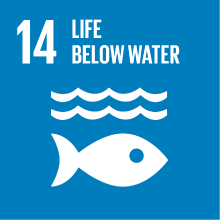BIOLOGICAL CHEMISTRY
- Academic year
- 2019/2020 Syllabus of previous years
- Official course title
- CHIMICA BIOLOGICA
- Course code
- CT0019 (AF:256079 AR:168895)
- Modality
- On campus classes
- ECTS credits
- 6
- Degree level
- Bachelor's Degree Programme
- Educational sector code
- BIO/10
- Period
- 2nd Semester
- Course year
- 3
- Where
- VENEZIA
Contribution of the course to the overall degree programme goals
Educational objectives of the teaching are: i) to acquire the knowledge and understanding of the main concepts of chemistry and physics applied to biological disciplines; ii) to critically investigate and comprehend the structural and chemical proprieties of the major biological macromolecules; iii) to promote and stimulate the use of a logical and deductive analysis necessary to quantitatively solve simple assignments of chemical biology, either alone or as part of small work units; iv) to develop the ability to expose scientific concepts in a formal manner and using a proper scientific language.
Expected learning outcomes
i) Knowledge of the chemical-physical properties of the biological macromolecules and understand the key relationships between structure and reactivity;
ii) Being able to make logical connections between different course’s subjects.
2. Ability to apply knowledge and understanding
i) Being able to use the acquired knowledge to comprehend and logically interpret the chemical-physical properties of the biological macromolecules;
ii) Being able to apply the acquired knowledge to solve simple assignments using a logical and deductive approach.
3. Ability to judge
i) Being able to apply the acquired knowledge to perform a critical analysis of the structural and chemical proprieties of the biological macromolecules;
ii) Being able to recognize errors through a critical analysis of the applied method and to formulate different hypothesis.
4. Communication skills
i) Being able to convey the acquired knowledge using an appropriate terminology;
ii) Being able to interact with the teacher and the classmates in a respectful and constructive manner, especially during the execution of the assignments carried out in a group.
5. Learning skills
i) Being able to take notes, selecting and collecting information according to their importance;
ii) Being able to solve independently simple assignments of chemical biology.
Pre-requirements
Contents
Properties of the key elements essential for the living organisms. Properties of the main functional groups present in the biomolecules. Non covalent bonds in the aqueous systems. Principles of bioenergetics and thermodynamic in biochemical processes. Properties and mechanisms of major biochemical reactions. The eukaryotic and prokaryotic cell, and their evolution. History of the greatest discoveries in biological chemistry.
ii) Carbohydrates
Chemical and physical properties of monosaccharide building blocks (classifications and stereochemistry), disaccharides, structural and energy storage polysaccharides glycosaminoglycans, glycoproteins and their biological roles. Description of some chemical and enzymatic methods to selectively modify the carbohydrates.
iii) Nucleotides and nucleic acids
Chemical and physical properties of nucleotides. Structure of nucleic acids DNA and RNA and their biological roles. Nucleotides as sources and carriers of chemical energy, components of enzymatic cofactors and chemical messengers. Description of some chemical and enzymatic methods to selectively modify nucleotides and nucleic acids.
iv) Amino acids and proteins
Chemical and physical properties of amino acids. Properties and structure of peptide bond. Primary, secondary, tertiary and quaternary structure of proteins. Descriptions of major methods to purify and characterise the proteins both functionally and structurally. Properties of receptor–ligand interaction. Function and mechanism of action of some proteins: myoglobin, hemoglobin and immunoglobulins. Description of some chemical and enzymatic methods to selectively modify amino acids and proteins.
v) Enzymes and enzymatic kinetic
General properties and classification of enzymes. The activation energy and reaction coordinate. Definition and determination of enzyme kinetic parameters: Michaelis-Menten e Lineweaver-Burk equations. Enzyme inhibition mechanisms. Allosteric regulation of enzymes. Function and molecular mechanism of some enzymes: chymotrypsin, lysozyme, transpeptidase and β–lactamase.
vi) Lipids
Chemical and physical properties and functions of saturated and unsaturated fatty acids. triacylglycerols, glycerophospholipids, sphingolipids, sterols, eicosanoids, steroids and vitamins. Description of some chemical and enzymatic methods to selectively modify lipids and liposomes.
vii) Biological membranes and transport
Composition, architecture, properties and dynamism of biological membranes. Description of some membrane proteins and active or passive solute transport across the membrane.
Referral texts
- D.L. Nelson, M.M. Cox: Lehninger Principle of Biochemistry, VII ed., W.H. Freeman and Sapling Learning.
As a supplementary reading, the following texts are recommended:
- D. Van Vranken, G. Weiss: Introduction to Bioorganic Chemistry and Chemical Biology, Garland Science – Taylor & Francis Group;
- G.T. Hermanson: Bioconjugate Techniques, III ed., Academic Press – Elsevier (freely and legally available in electronic format, in the university network, at the following website: https://www.sciencedirect.com/book/9780123822390/bioconjugate-techniques ).
Assessment methods
Specifically, the written test consists of:
- eight open questions concerning all parts of the program reported in the "Contents" section: students must thus demonstrate both the learning of the topics taught in class and the ability to expose them in a formal and concise manner using an appropriate scientific language;
- four exercises related to all the parts of the program reported in the "Contents" section: the students must in this way prove to be able to correctly solve the given problems, reporting the units of measurement and write all the calculation steps in a formal manner. This test aims to verify that the students have acquired the concepts dealt with during the lessons and knows how to apply them with consistency in order to solve scientific problems.
During the written test, only the scientific calculator is allowed. The use of notes, textbooks, phones and other electronic apparatus is not allowed, under penalty of exclusion from the final.
The evaluation is expressed in thirtieths. Finals will take place within the dates established by the academic calendar.
Type of exam
Teaching methods
The teaching material is present and downloadable from the University's Moodle e-learning platform.
Teaching language
Further information
Accommodation and support services for students with disabilities and students with specific learning impairments: Ca’ Foscari abides by Italian Law (Law 17/1999; Law 170/2010) regarding support services and accommodation available to students with disabilities. This includes students with mobility, visual, hearing and other disabilities (Law 17/1999), and specific learning impairments (Law 170/2010). In the case of disability or impairment that requires accommodations (i.e., alternate testing, readers, note takers or interpreters) please contact the Disability and Accessibility Offices in Student Services: disabilita@unive.it
2030 Agenda for Sustainable Development Goals
This subject deals with topics related to the macro-area "Natural capital and environmental quality" and contributes to the achievement of one or more goals of U. N. Agenda for Sustainable Development



